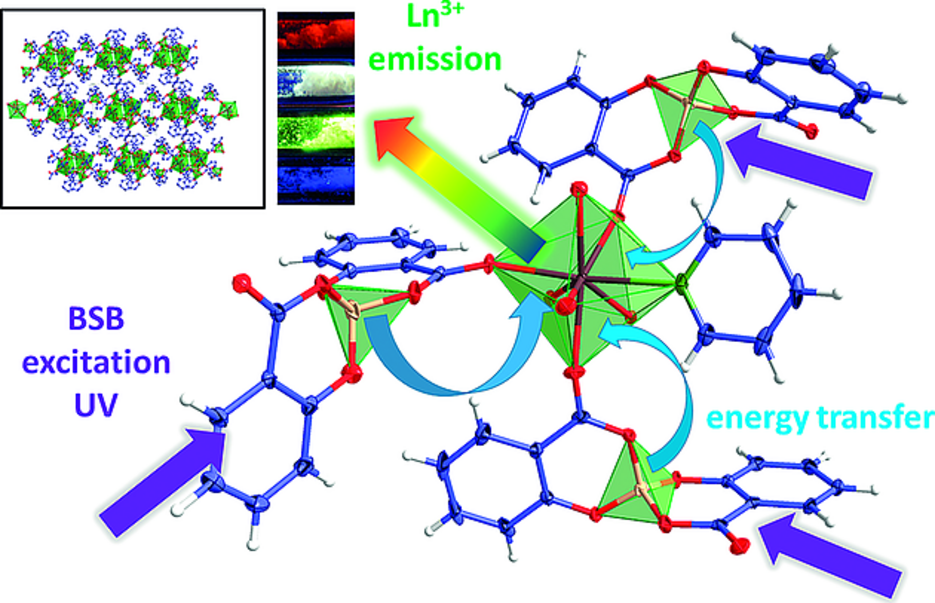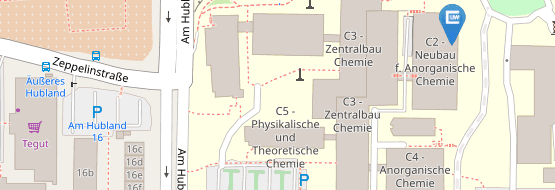Just Published in European Journal of Inorganic Chemistry
03/28/2017Bis(salicylato)borate as Versatile Sensitizer for Highly Luminescent Lanthanide Oxoborates from the Ultraviolet to Near Infrared with 4f and 5d Participation of the Lanthanides
Authors: Sven H. Zottnick,Jan A. P. Sprenger,Maik Finze,Klaus Müller-Buschbaum*
Abstract: Several lanthanide bis(salicylato)borate (BSBs) compounds were synthesized from anhydrous lanthanide chlorides and pyridine (py). The reactions start with the formation of small complexes, as indicated by [ErCl2(py)4(BSB)], on to 1D polymers 1∞[Ln(BSB)3(py)2] (Ln = Y, La–Nd, Sm) with a reduced py content. As the lanthanide radii contract along the lanthanide (Ln) series, the formation of 2D networks of the constitution 2∞[Ln(BSB)3(py)] (Ln = Sm, Eu, Tb, Dy, Er) is observed with the further release of py. The coordination polymers exhibit intense photoluminescence from the UV to the near-infrared (NIR) region through lanthanide-specific 4f–4f emission for the Nd3+, Sm3+, Eu3+, Tb3+, and Dy3+ species. The emission is remarkable for the Dy3+ (yellow-white) and Nd3+ (NIR) species owing to the sensitizer effects of the [BSB]– anion, which shows energy transfer to most Ln ions. For the Ce3+species, the participation of 5d states is observed and produces parity-allowed broadband 5d–4f emission. The bis(salicylato)borate ligand shows fluorescence in the UV with a short lifetime of only 2 ns, which makes the energy transfer in the other Ln compounds remarkable and marks it as versatile sensitizer for these metal ions.
Link: http://onlinelibrary.wiley.com/doi/10.1002/ejic.201601512/abstract


![[Translate to Englisch:] [Translate to Englisch:]](/fileadmin/_processed_/d/f/csm_FrontICBC2_1dbc3f66ed.jpg)
![[Translate to Englisch:] [Translate to Englisch:]](/fileadmin/_processed_/4/c/csm_IAC_Back_958d8b320b.png)

